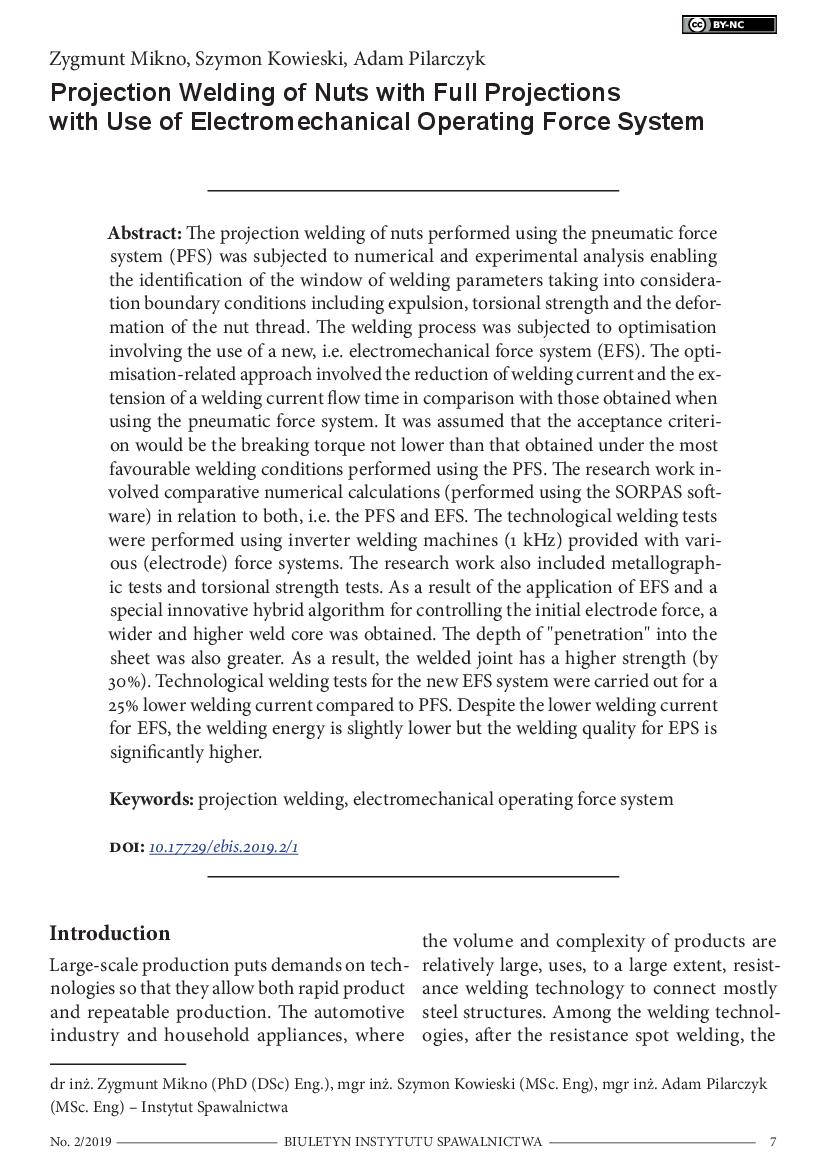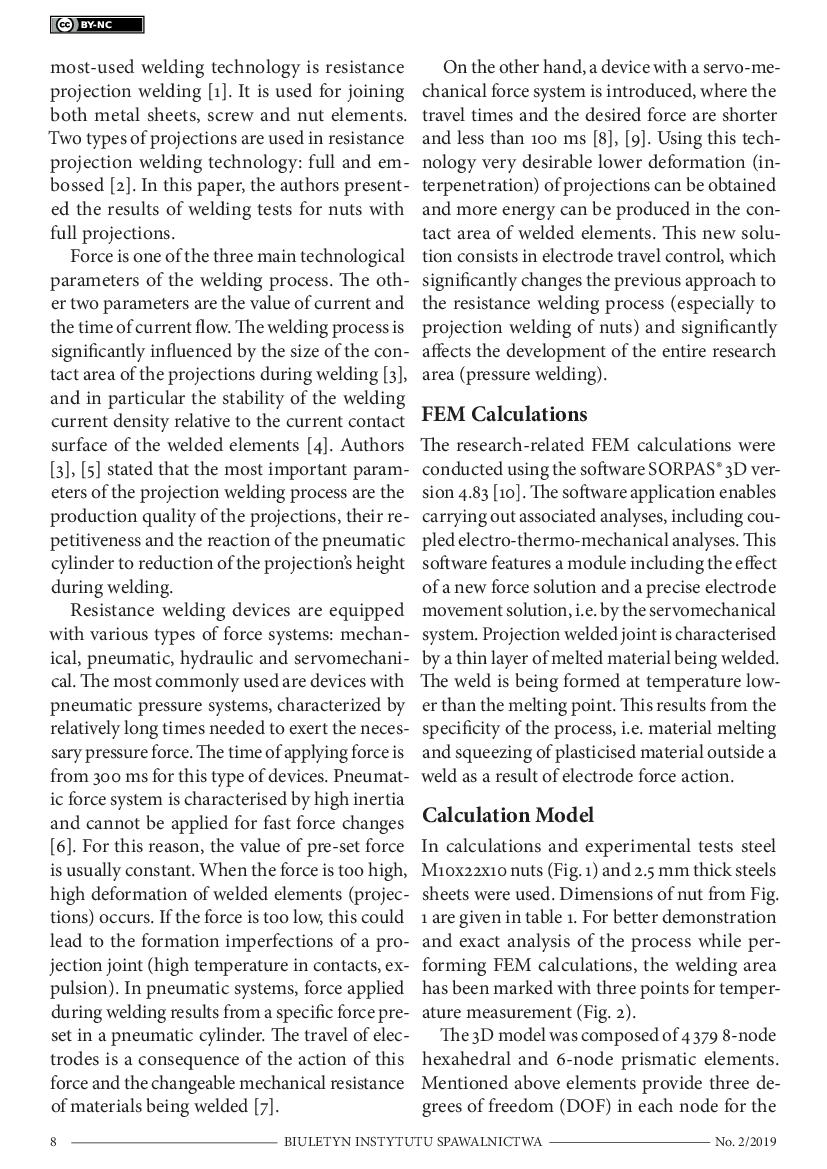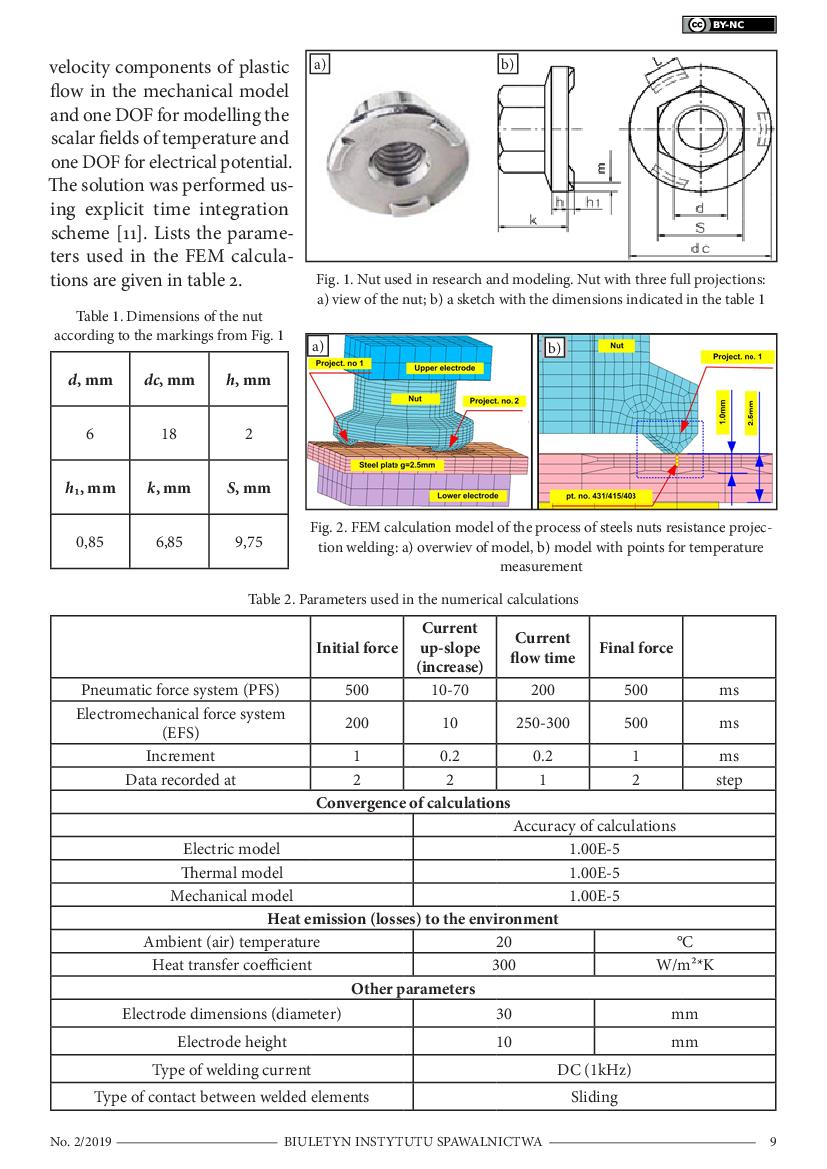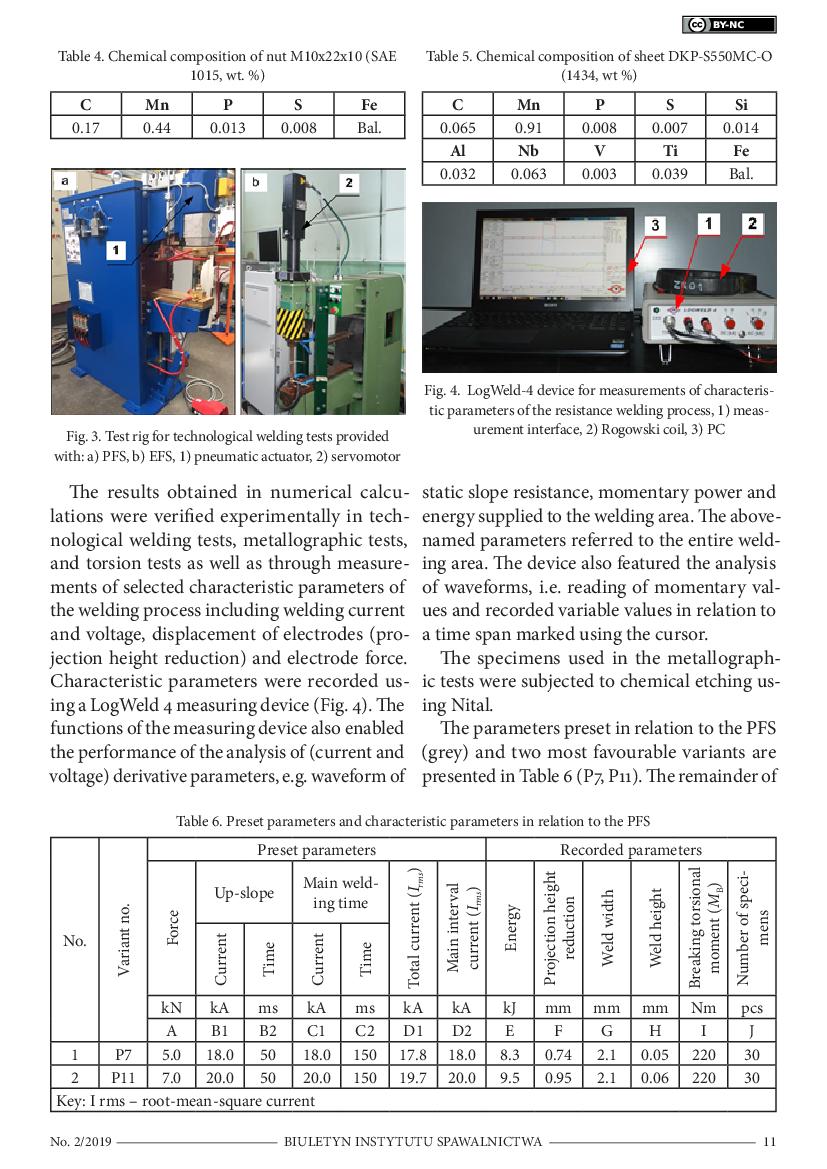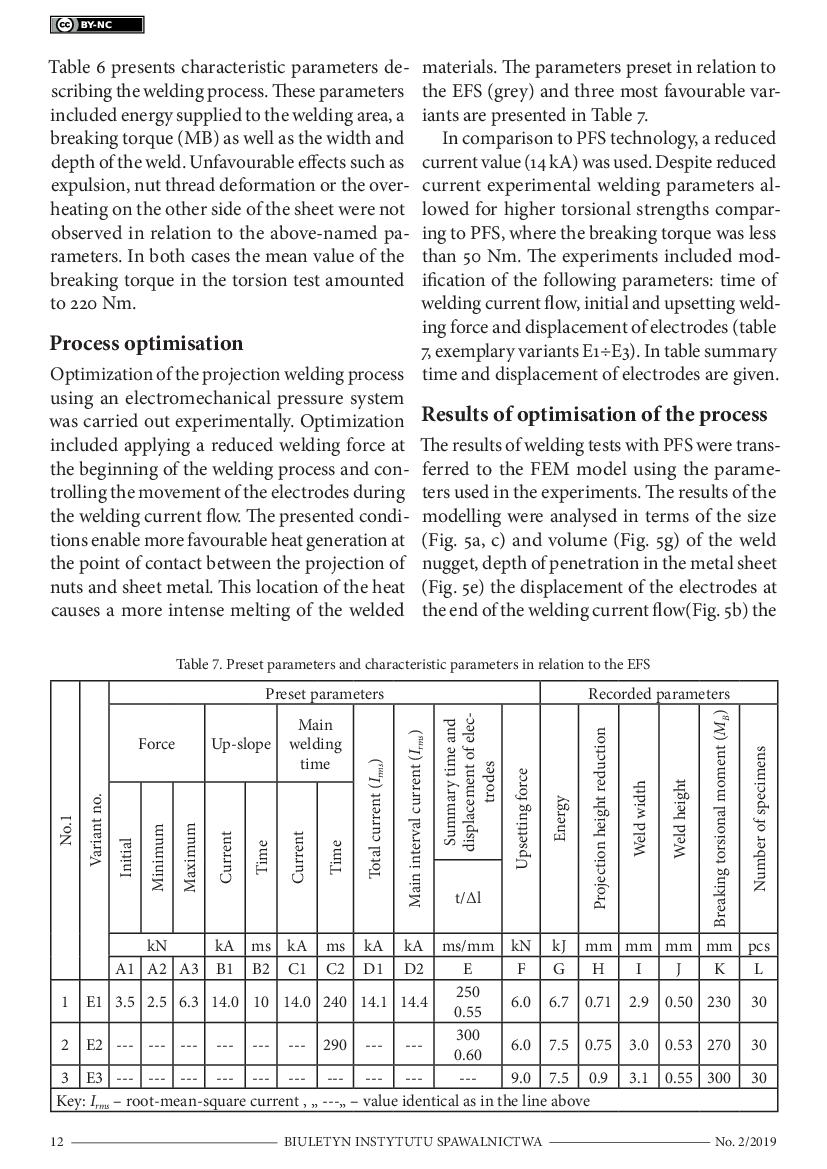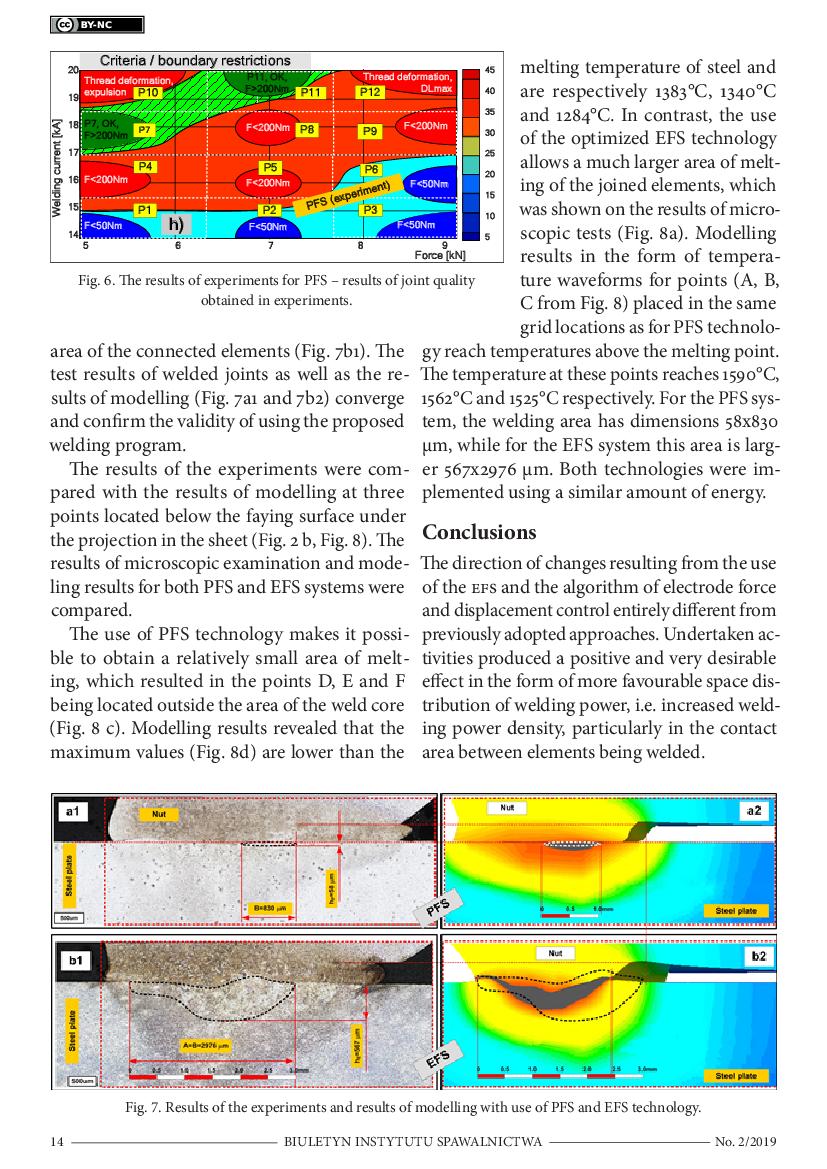Projection Welding of Nuts with Full Projections with Use of Electromechanical Operating Force System
The projection welding of nuts performed using the pneumatic force system (PFS) was subjected to numerical and experimental analysis enabling the identification of the window of welding parameters taking into consideration boundary conditions including expulsion, torsional strength and the deformation of the nut thread. The welding process was subjected to optimisation involving the use of a new, i.e. electromechanical force system (EFS). The optimisation-related approach involved the reduction of welding current and the extension of a welding current flow time in comparison with those obtained when using the pneumatic force system. It was assumed that the acceptance criterion would be the breaking torque not lower than that obtained under the most favourable welding conditions performed using the PFS. The research work involved comparative numerical calculations (performed using the SORPAS software) in relation to both, i.e. the PFS and EFS. The technological welding tests were performed using inverter welding machines (1 kHz) provided with various (electrode) force systems. The research work also included metallographic tests and torsional strength tests. As a result of the application of EFS and a special innovative hybrid algorithm for controlling the initial electrode force, a wider and higher weld core was obtained. The depth of "penetration" into the sheet was also greater. As a result, the welded joint has a higher strength (by 30%). Technological welding tests for the new EFS system were carried out for a 25% lower welding current compared to PFS. Despite the lower welding current for EFS, the welding energy is slightly lower but the welding quality for EPS is significantly higher.
doi: 10.17729/ebis.2019.2/1
 1 / 10
1 / 10
 2 & 3 / 10
2 & 3 / 10
 4 & 5 / 10
4 & 5 / 10
 6 & 7 / 10
6 & 7 / 10
 8 & 9 / 10
8 & 9 / 10 10 / 10
10 / 10


